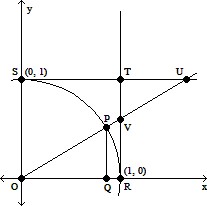The rate of change in sales S (in thousands of units) of a new product is proportional to the difference between L and S at any time t (in years), where ?L is the maximum number of units of the new product available. When  ,
,  . Write and solve the differential equation for this sales model.
. Write and solve the differential equation for this sales model.
?
A. ?
B. ?
C.
D. ?
E.
Answer: A
Mathematics
You might also like to view...
Find the intersection. x = 2 + 4t, y = -6 + 10t, z = 7 + 10t ; -10x + 4y + 10z = 9
A. 
B. (6, 4, 17)
C. 
D. (-2, -16, -3)
Mathematics
Place parentheses, if needed, to turn this into a true statement.8 - 10 - 9 + 3 = 10
A. 8 - (10 - 9) + 3 = 10 B. No parentheses needed C. 8 + 10 - (9 + 3) = 10 D. (8 - 10) - 9 + 3 = 10
Mathematics
Solve the problem.Let angle POQ be designated ?. Angles PQR and VRQ are right angles. If ? = 32°, find the length of PQ accurate to four decimal places. 
A. 0.5299 B. 0.6249 C. 1.8871 D. 0.8480
Mathematics
Solve the system using the substitution method. If the system has no solution or an infinite number of solutions, state this.2x + 8y = 4 x = -4y + 2
A. Infinite number of solutions B. No solution C. (2, 4) D. (4, 2)
Mathematics




